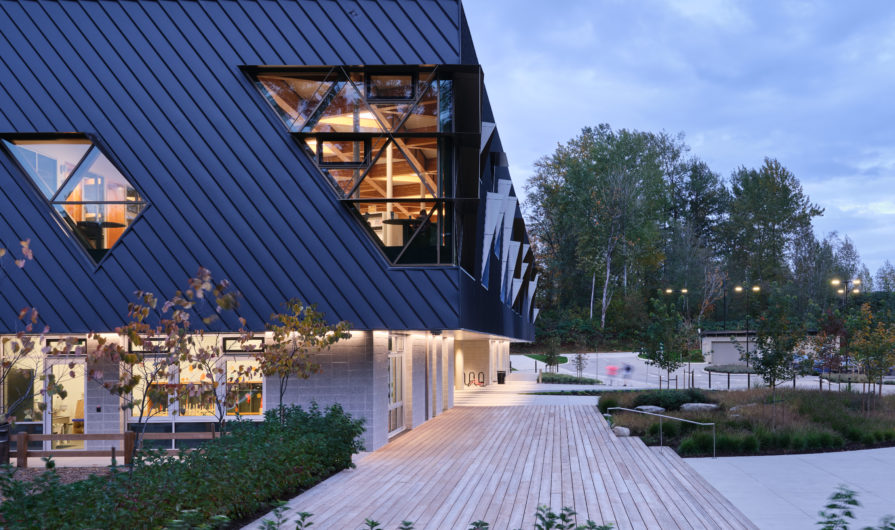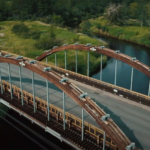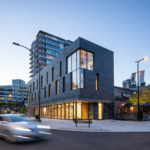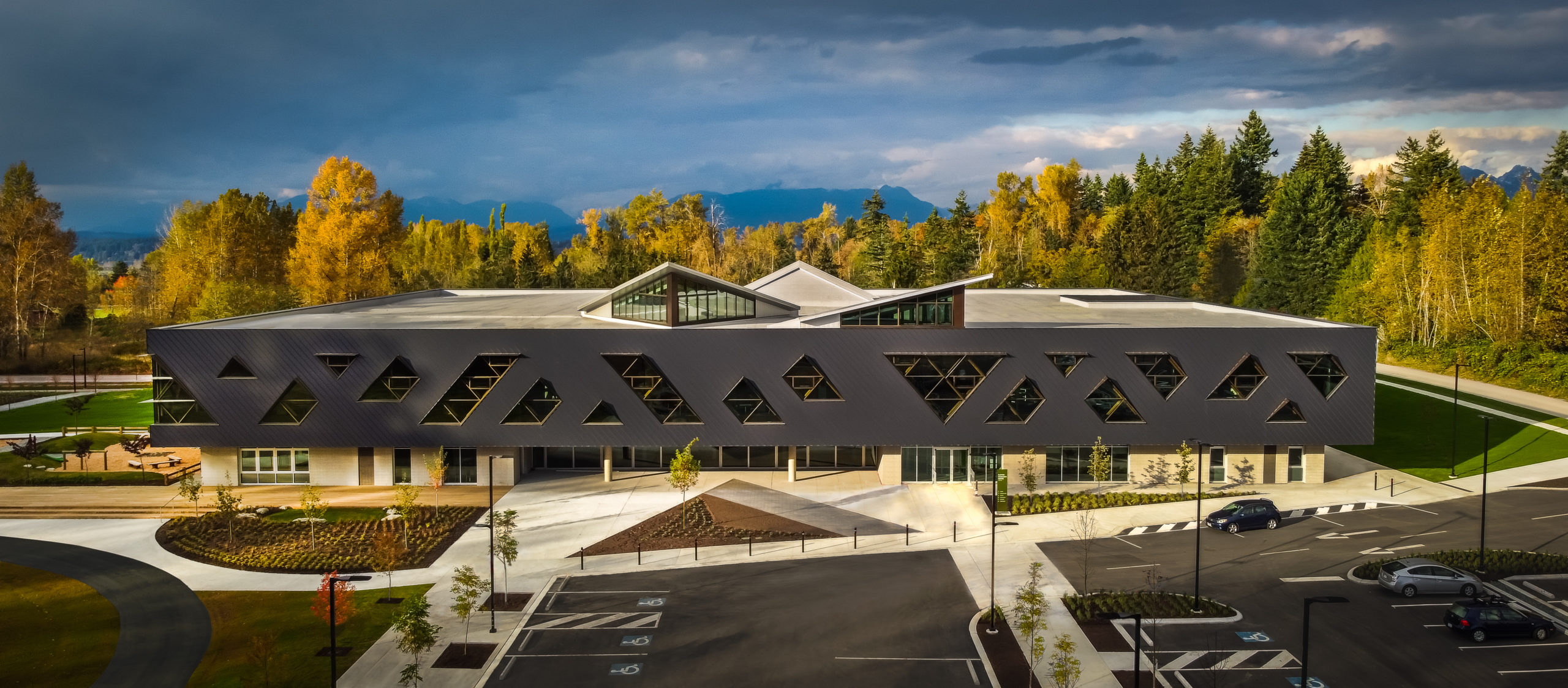
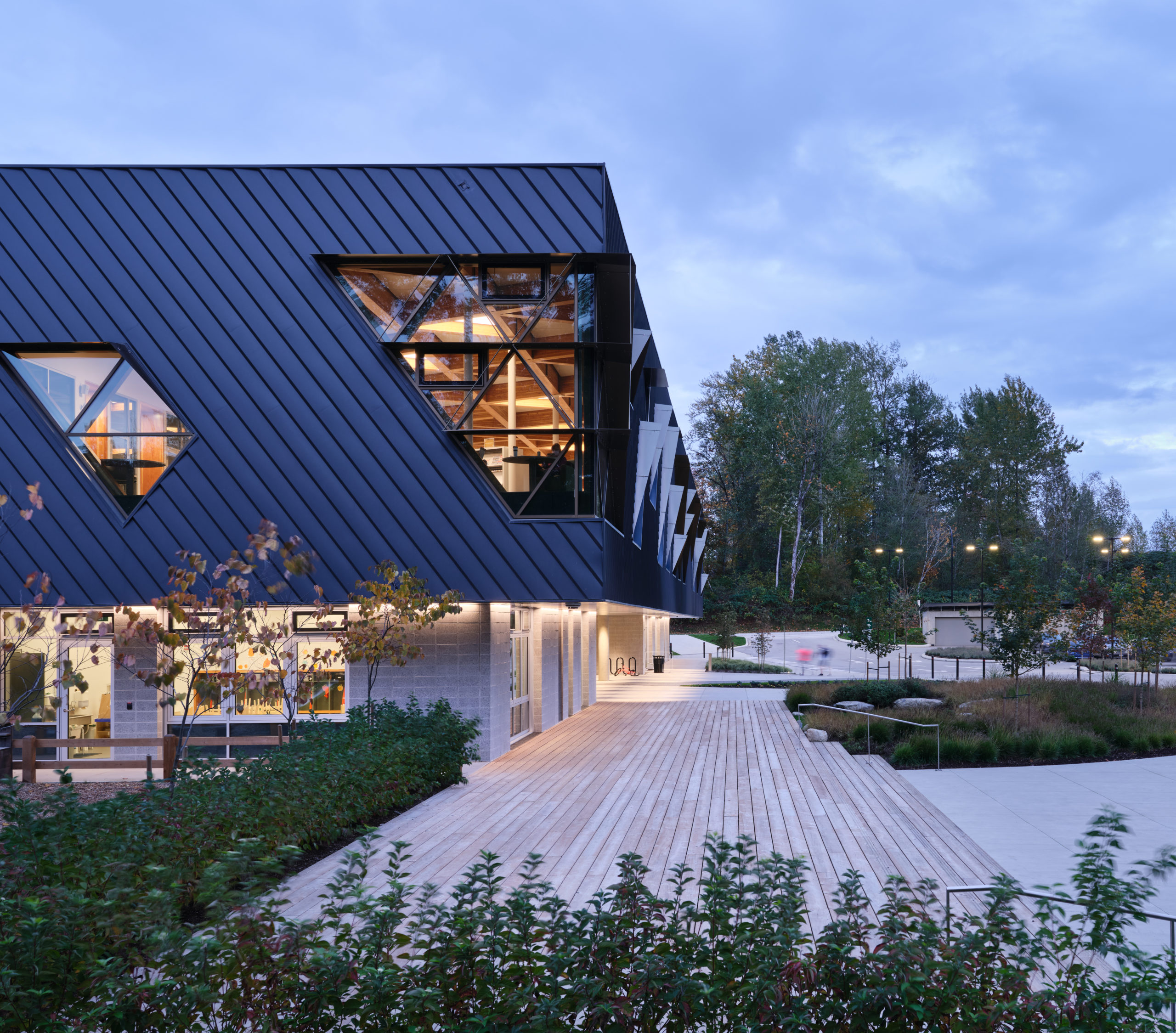
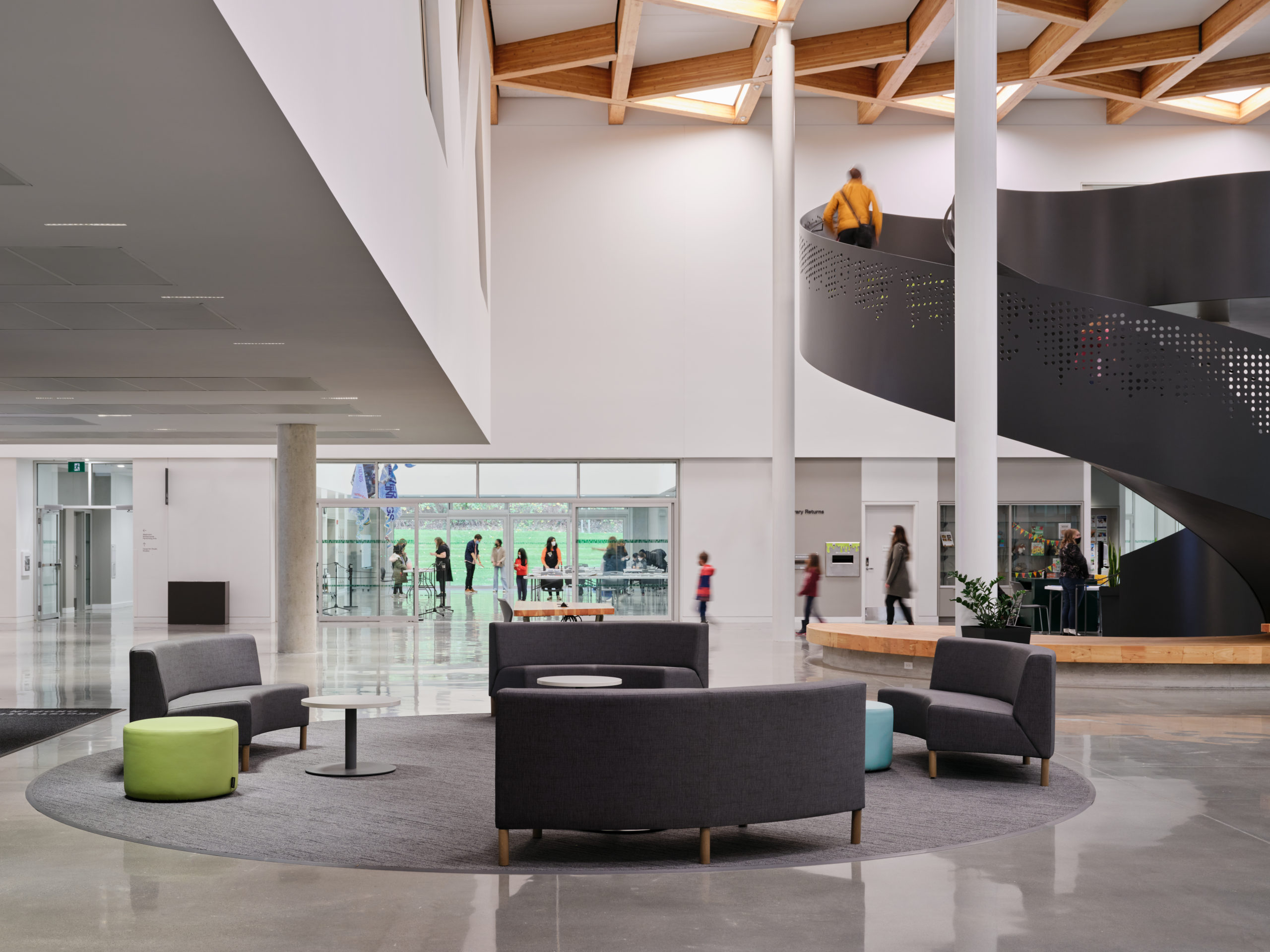
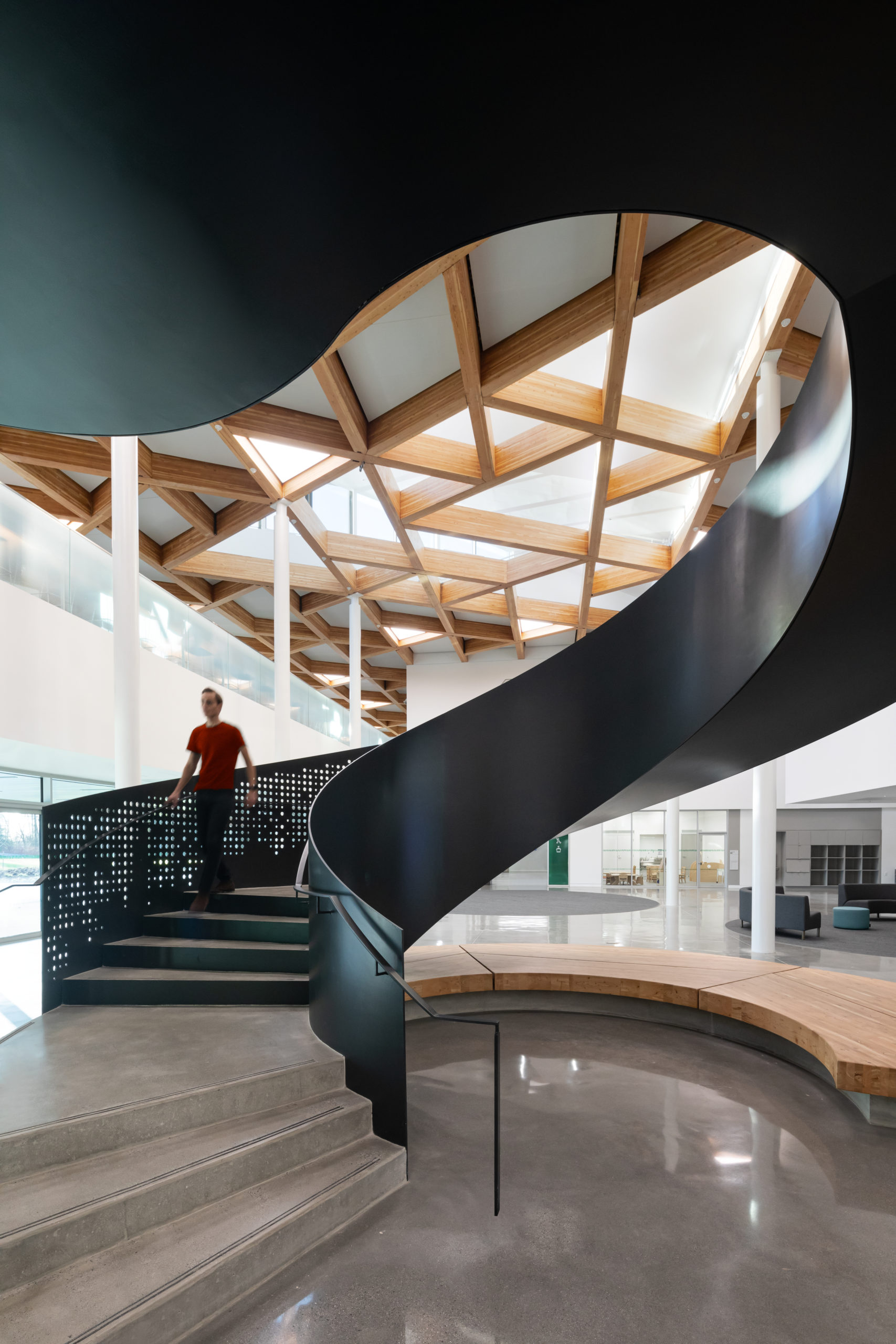
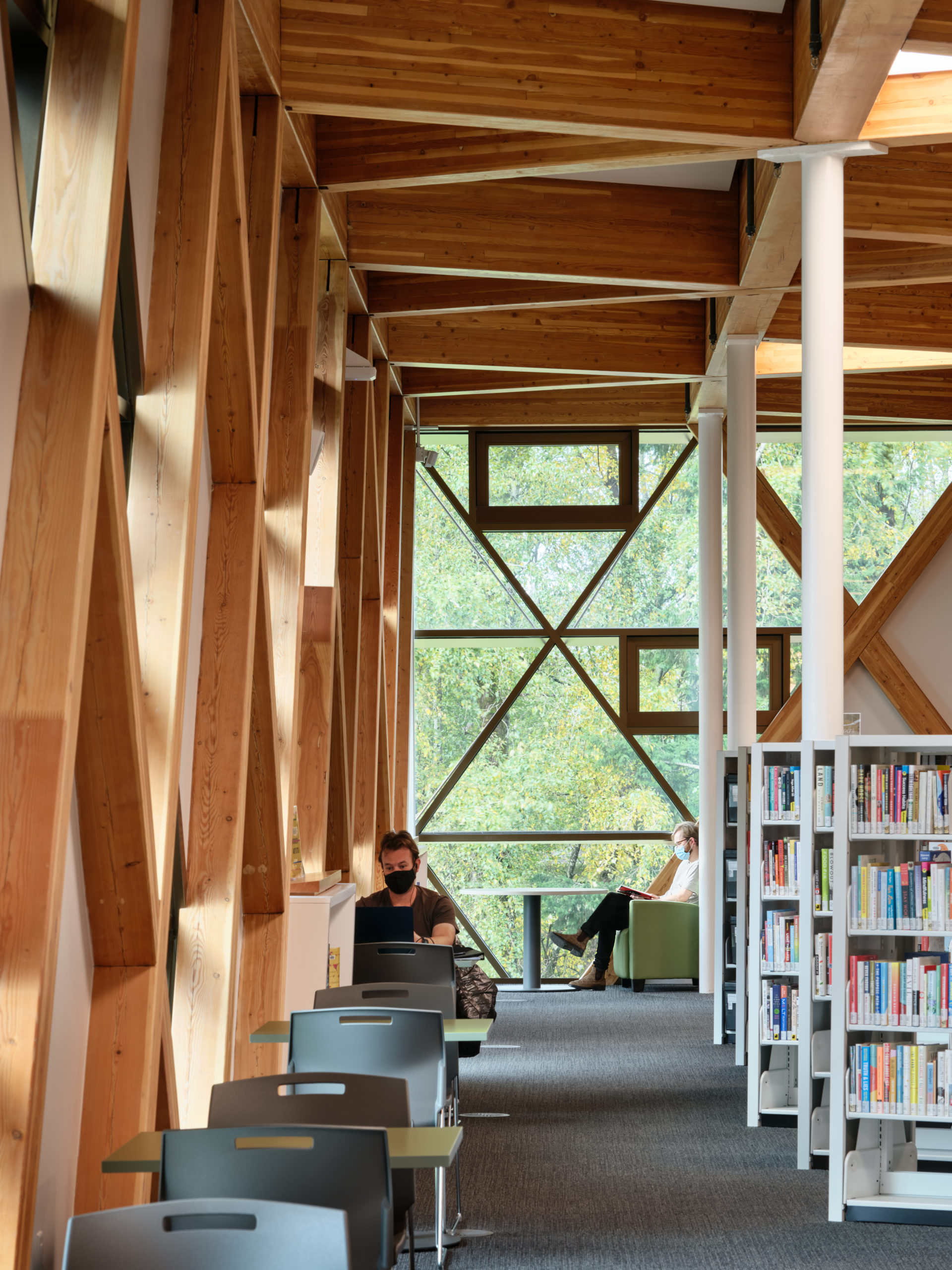
It’s good to be first. That’s an accolade Surrey, BC, knows all about. The city, about 40 km southeast of Vancouver, is home to the first community center and largest non-residential building in North America to achieve Passive House status.
Completed in February 2021, the 78,000-sq.ft., two-story Clayton Community Centre features a double-height social gathering space at the main entry, providing a hub for community engagement. It combines a mix of spaces into one facility: arts and culture programming (including performing and visual arts spaces), recreational activities (including a gym and fitness center), and a branch library. There are also spaces for community-led programming, including a community kitchen and garden, a workshop, a café, and preschool and childcare spaces.
“The design process is quite different for Passive House,” says Melissa Higgs, architect with hcma and principal of the project. “You have to really understand how the client will be using the building, the occupant load, the type of equipment they’re going to have. All this must be considered in the very early stages of design.
“We went into it designing on the basis of what a residence would suggest,” says Higgs, “which would be to super-insulate the building.”
But the first modeling indicated that the facility would only have to be heated less than a week a year. “The heat generated by occupants in the building, the lighting systems, and the equipment – but mostly the people – meant that we had a cooling problem, not a heating problem. We were trying to reduce the energy load associated with cooling the space.”
That’s the opposite issue for a Passive House residence. “You don’t have enough people in [a residence] to generate their own heat to heat the building.” As a result of the modeling, some insulation was removed from the design and “popped-up” clerestory windows were added to provide cooling at night.
The spaces within the facility were placed according to both their program usage and natural light requirements. For example, the fitness center needed to have a cool operating temperature so it couldn’t be placed on the south side of the building.
“We needed to think of these spaces and how the design of the building would work to accommodate them,” says Higgs.
The design team also had to consider aspects of design that aren’t typically seen in recreation and community centers. One such design was the entryway into the facility.
“It took us awhile to figure out because airtightness is such a huge part of the success of Passive House,” she says. “If you think of a community facility that’s busy and thriving, even if you have a vestibule, effectively, the door is open a lot of the time because people are coming and going.”
The team mapped out the size of the vestibule they’d need to meet the airtightness requirement, but it was “enormous and unfeasible.” The end result was a revolving door. “It’s an airtight passage,” says Higgs, “but we haven’t seen community centers, especially in North America, where we have that kind of entry condition.”
Higgs says you can feel the quiet when you go into the building. “The comfort piece of it is real,” she says. In fact, on one of the coldest days of the year (there was snow on the ground), while the building was under construction, Higgs visited the site. “I had my full-on insulated jacket and thought, Oh, it’s going to be cold on the job site.”
At this point in the construction, the envelope was mostly in place. “Fifteen minutes in, I took my jacket off.” The tradespeople were in their indoor clothes and it was quiet. There was only one generator outside of the building. The contractors told Higgs as soon as the building was enclosed, they didn’t need to use the number of generators they’d budgeted for. Says Higgs, “The building was already operating the way it should.”
Architect
hcma
Vancouver, BC
Structural Engineer
Read Jones Christoffersen
Vancouver, BC
Contractor
EllisDon Corporation
Mississauga, ON
PhotographerS
Andrew Doran
Nelson, BC
doublespace,
Scarborough, ON
Ema Peter
Vancouver, BC

